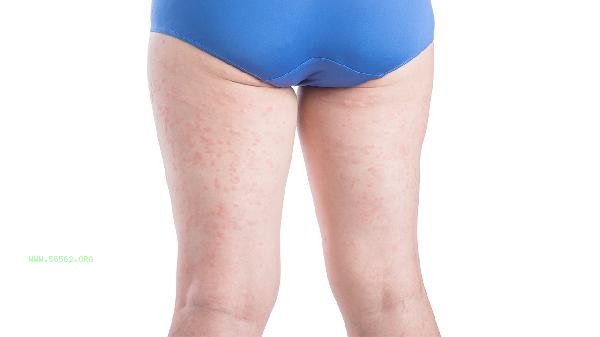Thigh muscle soreness is usually caused by excessive exercise, lactic acid accumulation, muscle strains, poor blood circulation, or electrolyte imbalance. It can be relieved through hot compress massage, stretching and relaxation, nutritional supplementation, adequate rest, and medication treatment.

1. Excessive exercise
High intensity exercise or sudden increase in exercise intensity can lead to muscle fiber micro damage and trigger inflammatory reactions. Commonly seen after prolonged running, squats, or mountain climbing. Pain reaches its peak within 48 hours after exercise, which belongs to delayed muscle soreness. It is recommended to warm up thoroughly before exercise and do low-intensity relaxation activities after exercise to gradually adapt to the intensity of the exercise.
2. Lactic acid accumulation
During anaerobic exercise, the lactic acid produced by glycolysis cannot be metabolized in a timely manner, which can stimulate nerve endings and produce a burning sensation. This type of soreness often appears within a few hours after exercise and gradually subsides after 24 hours. Slow walking and taking a warm bath can promote lactate metabolism, while moderate supplementation of vitamin B can help with energy conversion.
3. Muscle Strain
Incorrect exercise posture or external impact may cause partial tearing of muscle fibers, manifested as local sharp pain accompanied by swelling and bruising. Mild strains require immediate cessation of activity and ice compress, while severe cases may result in muscle rupture and require medical attention. During the recovery period, repeated injury movements should be avoided and elastic bandages should be used to protect the affected area.

4. Poor blood circulation
Prolonged sitting or wearing tight clothing can limit blood flow in the lower limbs, leading to the accumulation of metabolic waste and causing a feeling of soreness and bloating. Office workers often experience symptoms of heavy thighs in the afternoon. It is recommended to get up and move around every hour, wear pressure socks to improve circulation, and elevate the legs before bedtime to promote venous return.
5. Electrolyte imbalance
Excessive sweating leading to loss of sodium, potassium, and magnesium can affect muscle contraction function and cause spasmodic pain. It is prone to occur after summer exercise or diarrhea. You can drink sports drinks containing electrolytes and consume potassium rich foods such as bananas and spinach. If accompanied by nausea and dizziness, be alert to hyponatremia.

Daily attention should be paid to gradually increasing the intensity of exercise, and dynamic and static stretching should be done before and after exercise. If persistent pain occurs, anti-inflammatory drugs such as diclofenac diethylamine cream can be applied topically. In severe swelling, oral ibuprofen can be taken to relieve symptoms. Ensure daily water intake, consume high-quality protein and vitamin C to promote muscle repair. Pillows can be used to elevate the legs during sleep, and low-frequency pulse therapy devices can be used to promote recovery. If the pain does not subside or the skin turns purple and fever occurs after 72 hours, serious conditions such as compartment syndrome should be promptly investigated.








Comments (0)
Leave a Comment
No comments yet
Be the first to share your thoughts!